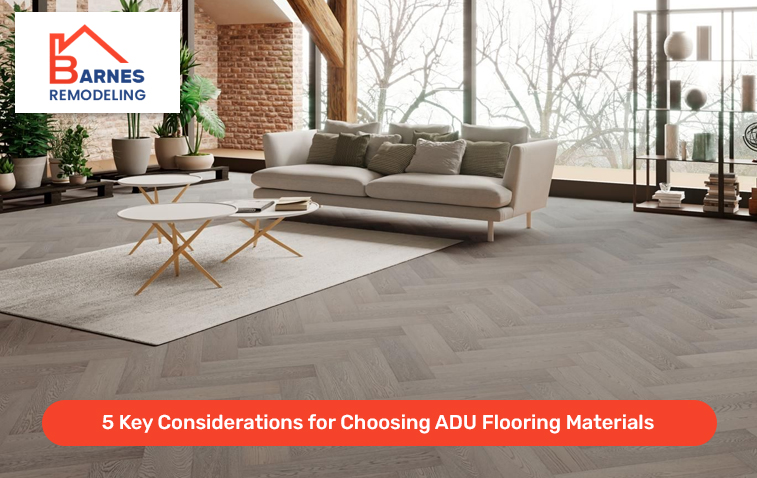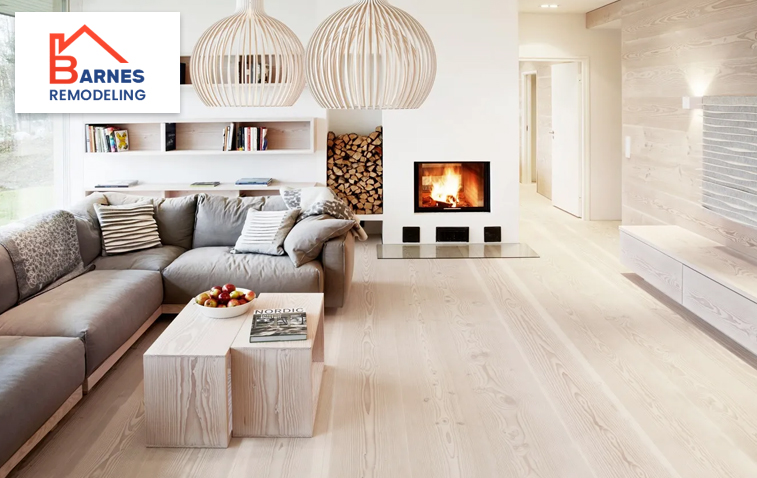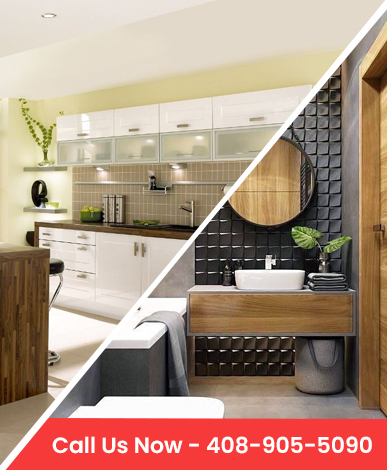5 Key Considerations for Choosing ADU Flooring Materials
Choosing the right flooring materials for your Accessory Dwelling Unit (ADU) is one of the most important decisions you’ll make in the design process. The flooring you choose will impact not only the look and feel of the space but also its functionality and durability. Whether you’re planning to use your ADU as a guest house, a rental property, or a home office, the flooring needs to meet your specific needs.
There are many options available, each with its own set of advantages and challenges. From hardwood to tile, vinyl to laminate, understanding the key factors that go into choosing the right flooring can help you create a space that is both beautiful and practical.

Durability and Longevity
When choosing flooring for your ADU, durability is a top priority. The floor will be subjected to daily wear and tear, so it’s important to choose a material that can withstand foot traffic, spills, and other potential damage.
Understanding Material Strength
Different flooring materials have different levels of strength and durability. Some materials, like hardwood, are known for their long-lasting durability, while others, like laminate, may wear out more quickly under heavy use.
Simple Explanation:
- Hardwood: Hardwood floors are strong and can last for decades with proper care. They are resistant to scratches and dents, making them a good choice for high-traffic areas.
- Tile: Tile is another durable option, especially in areas prone to moisture, like bathrooms or kitchens. It’s hard and can handle heavy use without showing much wear.
- Vinyl: Vinyl flooring is also durable and can mimic the look of wood or tile. It’s resistant to water and stains, making it a practical choice for many areas of the home.
Considering Maintenance
Durability isn’t just about how long the material lasts; it’s also about how easy it is to maintain. Some flooring materials require more upkeep than others.
Simple Explanation:
- Hardwood Maintenance: While durable, hardwood floors need regular cleaning and occasional refinishing to maintain their appearance.
- Tile Maintenance: Tile floors are easy to clean but may require periodic re-grouting to keep them looking fresh.
- Vinyl Maintenance: Vinyl floors are low-maintenance, requiring just regular sweeping and occasional mopping to keep them in good condition.
Comfort and Feel
The comfort and feel of the flooring are important considerations, especially if the ADU will be used as a living space. You want the flooring to be comfortable to walk on and to contribute to a cozy, inviting atmosphere.
Warmth Underfoot
Some flooring materials feel warmer and more comfortable underfoot than others. This is especially important in bedrooms and living areas where you’ll spend a lot of time.
Simple Explanation:
- Carpet: Carpet is the warmest and softest flooring option. It’s ideal for bedrooms and living rooms where comfort is a priority.
- Cork: Cork flooring is another option that feels warm and soft underfoot. It’s also resilient, which makes it comfortable to walk on.
- Vinyl and Laminate: Vinyl and laminate floors can feel cooler underfoot, but area rugs can be used to add warmth and comfort where needed.
Noise Reduction
Flooring materials can also impact the noise level in a ADU unit. Softer materials like carpet help to reduce noise, while harder surfaces like tile can amplify sound.
Simple Explanation:
- Carpet for Quiet: Carpet is great for reducing noise, making it a good choice for bedrooms or upstairs spaces where noise might be an issue.
- Cork for Sound Absorption: Cork also helps to absorb sound, making it a quieter option for living areas.
- Tile and Hardwood: Tile and hardwood can be noisier, but using area rugs and adding padding beneath the floor can help reduce noise.
Moisture Resistance
Moisture resistance is a key consideration, especially in areas of the ADU like the kitchen, bathroom, or entryway where spills or humidity are more likely.
Choosing Water-Resistant Materials
Not all flooring materials are suitable for areas where they may come into contact with water. It’s important to choose materials that can handle moisture without warping, staining, or becoming damaged.
Simple Explanation:
- Tile: Tile is one of the best options for areas prone to moisture. It’s completely water-resistant and easy to clean, making it ideal for bathrooms and kitchens.
- Vinyl: Vinyl is another water-resistant option. It’s great for areas where spills are common, like kitchens or laundry rooms.
- Laminate with Caution: Some laminate flooring is water-resistant, but it’s important to check the specifications. Not all laminate is suitable for wet areas.
Preventing Water Damage
Even with water-resistant flooring, it’s important to take steps to prevent water damage, especially in an ADU that may not be occupied full-time.
Simple Explanation:
- Proper Sealing: Make sure the flooring is properly sealed, especially in wet areas. This helps prevent water from seeping into the material and causing damage.
- Quick Clean-Up: Spills should be cleaned up quickly to avoid staining or damaging the floor.
- Area Rugs: Using area rugs in high-moisture areas can help protect the floor and add an extra layer of water resistance.
Style and Aesthetics
The style and aesthetics of the flooring play a major role in the overall look and feel of the ADU. The flooring sets the tone for the space and can either complement or contrast with the other design elements.
Matching the Overall Design
The flooring you choose should match the overall design and style of the ADU. Whether you’re going for a modern, rustic, or traditional look, the flooring should enhance the space.
Simple Explanation:
- Hardwood for Classic Elegance: Hardwood floors are timeless and work well in a variety of settings, from traditional to modern.
- Tile for Versatility: Tile comes in many colors, patterns, and styles, making it a versatile option that can match any design aesthetic.
- Vinyl for Variety: Vinyl flooring can mimic the look of wood, stone, or tile, giving you the flexibility to create the look you want without the high cost.
Creating a Cohesive Look
To create a cohesive look in the ADU, consider how the flooring will interact with the walls, furniture, and other design elements.
Simple Explanation:
- Color Coordination: Choose flooring that complements the color scheme of the space. Light-colored floors can make a space feel larger, while dark floors add warmth and depth.
- Texture and Pattern: Consider the texture and pattern of the flooring. Smooth, sleek floors work well in modern spaces, while textured or patterned floors add interest in more eclectic designs.
- Consistency Across Spaces: For a cohesive look, use the same flooring materials throughout the ADU or at least in the main living areas. This creates a seamless flow from one room to the next.
Budget and Cost-Effectiveness
While cost should never be the only factor in choosing flooring, it is an important consideration, especially if you’re working within a budget.
Balancing Cost and Quality
It’s important to find a balance between cost and quality. While some flooring options may be more expensive upfront, they might offer better durability and longevity, making them more cost-effective in the long run.
Simple Explanation:
- Hardwood Investment: Hardwood floors are more expensive, but they add value to the property and can last for decades with proper care.
- Laminate Savings: Laminate flooring is a more affordable option that can still provide a stylish look, though it may not last as long as other materials.
- Vinyl Value: Vinyl offers a good balance of affordability, durability, and style, making it a cost-effective choice for many ADUs.
Considering Installation Costs
The cost of installation is another factor to consider. Some flooring materials are easier to install than others, which can impact the overall cost.
Simple Explanation:
- DIY-Friendly: Some flooring, like laminate or vinyl planks, can be installed by a handy homeowner, saving on installation costs.
- Professional Installation: Materials like tile or hardwood may require professional installation, which adds to the overall cost but ensures a high-quality finish.
- Long-Term Savings: Investing in professional installation can save money in the long run by preventing mistakes and ensuring the floor is installed correctly.
Choosing the right flooring materials for your ADU is a decision that involves many factors, from durability and comfort to style and budget. By considering how the space will be used, the climate, and your personal preferences, you can select a flooring material that meets your needs and enhances the overall look and feel of your ADU. Whether you opt for the timeless elegance of hardwood, the versatility of tile, or the affordability of vinyl, the key is to find a balance that works for your lifestyle and budget. With careful planning and thoughtful consideration, you can create a beautiful, functional space that will stand the test of time.
FAQs
What is the best flooring material for a high-moisture area in an ADU?
Tile and vinyl are the best choices for high-moisture areas like bathrooms and kitchens. Both are water-resistant and easy to clean, making them ideal for spaces where spills and humidity are common.
How can I make a small ADU feel larger with flooring?
Using light-colored flooring can make a small space feel larger and more open. Additionally, using the same flooring throughout the ADU creates a seamless flow that enhances the sense of space.
Is hardwood flooring suitable for an ADU?
Yes, hardwood flooring is suitable for an ADU, especially if you’re looking for a durable, long-lasting option that adds value to the property. However, it may require more maintenance compared to other materials.
Can I install the flooring myself in my ADU?
It depends on the material. Some flooring, like laminate or vinyl planks, can be installed as a DIY project. However, materials like tile or hardwood may require professional installation to ensure a high-quality finish.


